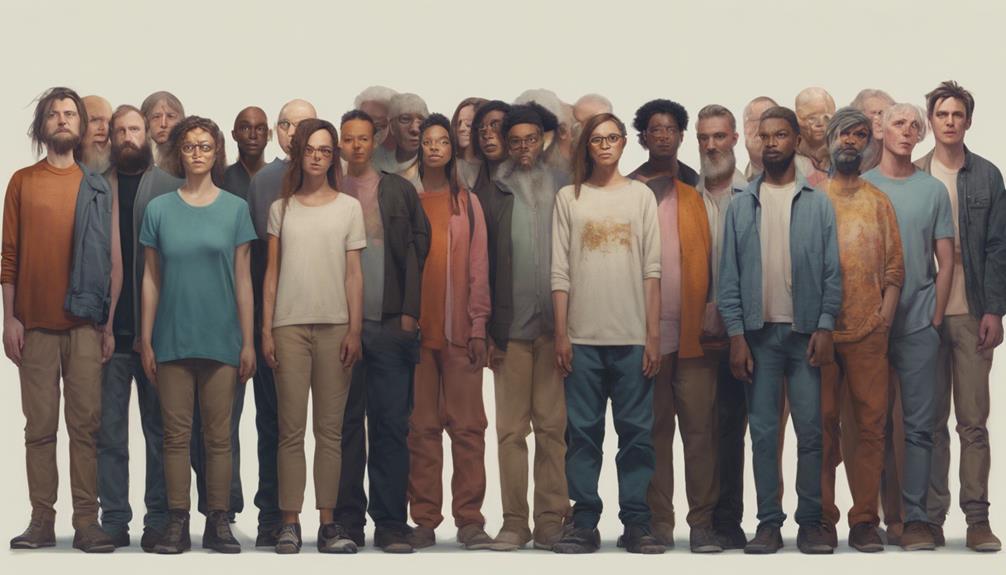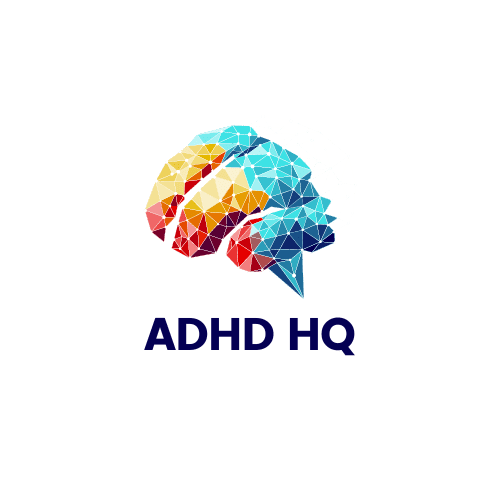Neurotypical Vs Neurodivergent
As a child psychologist, I once worked with a neurodivergent teenager who struggled in traditional academic settings due to his ADHD. His unique way of processing information often led to misunderstandings and frustration in school. However, as we explored his strengths and adapted his learning environment, a remarkable transformation began to unfold.
His creativity and problem-solving skills flourished, showcasing the importance of understanding and supporting neurodivergent individuals. This case study highlights the significant impact of recognizing diverse cognitive profiles and fostering inclusivity in educational settings.
Key Takeaways
- Neurotypical individuals exhibit typical brain development and processing.
- Neurodivergent individuals demonstrate variations in brain function.
- Neurotypical communication relies on implicit social dynamics.
- Neurodivergent individuals may struggle with non-verbal communication.
Understanding Neurotypical and Neurodivergent Traits

Neurotypical individuals exhibit typical brain development and processing, while neurodivergent individuals demonstrate variations in brain function. Within the domain of neurodiversity, conditions like Autism, ADHD, dyslexia, and dyspraxia present diverse cognitive profiles and behavioral patterns that deviate from what's considered typical. Neurotypical individuals often adhere to expected social norms, whereas neurodivergent individuals may encounter challenges related to sensory processing disorders and atypical communication styles.
Acknowledging neurodivergence is important as it highlights the spectrum of brain differences without assigning a negative connotation. Recognizing these variations fosters a culture of understanding, acceptance, and inclusion. By embracing neurodiversity, society can provide better support tailored to the unique needs of individuals with atypical brain processing. Understanding the distinct cognitive profiles within neurodivergent populations helps pave the way for creating environments that cater to a broader range of abilities and promote a more inclusive and empathetic society.
Impact on Social Interactions and Communication

Considering the intricate dynamics of social interactions and communication between individuals with varying cognitive profiles, it becomes evident that understanding the impact of these differences is essential for fostering inclusive environments.
- Neurotypical individuals excel in social interactions, effortlessly interpreting social cues and engaging in reciprocal communication.
- Neurodivergent individuals may struggle with non-verbal communication and understanding social norms, leading to challenges in maneuvering social situations.
- Studies indicate that neurodivergent individuals often experience feelings of isolation and exclusion due to difficulties in social interactions.
- Neurotypical communication relies on implicit understanding of social dynamics, while neurodivergent communication tends to be more direct and literal.
- Neurodivergent individuals can benefit from explicit communication strategies and accommodations to enhance their social interactions and communication skills, promoting inclusivity and understanding in social settings.
Educational and Workplace Considerations

In educational and workplace settings, understanding the diverse cognitive profiles of individuals is important for fostering inclusivity and maximizing potential. Educational accommodations play a significant role in supporting neurodivergent individuals by tailoring learning approaches to their unique styles and strengths. While neurotypical individuals may thrive using traditional educational methods, neurodivergent individuals often excel with personalized support that caters to their specific needs.
Workplace diversity initiatives are increasingly recognizing the value that neurodivergent employees bring through their different perspectives and unique skills. Inclusive workplaces that embrace neurodiversity create environments where all employees, both neurotypical and neurodivergent, can thrive and contribute effectively. By acknowledging and accommodating the differences between neurotypical and neurodivergent individuals, organizations can create a more supportive and inclusive environment for all employees to succeed. Recognizing and respecting the varied learning styles and approaches of individuals is key to fostering a truly inclusive and diverse workplace.
Recognizing Neurodiverse Strengths and Challenges

Neurodiverse individuals demonstrate a range of strengths and challenges that play a significant role in shaping their cognitive experiences and abilities. When recognizing neurodiverse strengths and challenges, it's important to understand the unique characteristics that contribute to their diverse ways of thinking.
- Neurodiverse strengths: Some individuals excel in creativity, visual-spatial reasoning, and attention to detail, bringing valuable perspectives to problem-solving and innovation.
- Challenges: Sensory processing difficulties and communication barriers can present obstacles in daily interactions and learning environments.
- Hyperfocus and hyper systemizing: These traits, exhibited by some neurodivergent individuals, can lead to exceptional focus and analytical skills in specific areas of interest.
- Spiky cognitive profiles: Neurodiverse individuals may have uneven skill sets, excelling in certain domains while facing challenges in others.
- Accommodating for success: Understanding and accommodating these strengths and challenges can enhance well-being and success for neurodiverse individuals, fostering a supportive environment where they can thrive.
Promoting Neurodiversity Acceptance and Inclusion

Exploring the societal integration of diverse cognitive functions and conditions like autism spectrum disorder and ADHD underscores the importance of embracing neurodiversity. The Neurodiversity Movement advocates for acceptance and inclusion of neurodivergent people, recognizing the value of diverse brain functions. Rather than focusing on deficits, this approach celebrates strengths and unique perspectives. Individuals with autism spectrum disorder (ASD) represent a significant portion of the population, with approximately 1 in 54 children in the US diagnosed with ASD. Embracing neurodiversity extends beyond individual interactions to societal acceptance, promoting understanding and accommodating diverse behaviors.
Businesses are increasingly acknowledging the competitive advantage of neurodiversity in the workplace. By fostering an inclusive environment for neurodiverse employees, organizations benefit from a diverse range of skills and perspectives. Promoting acceptance and inclusion not only enhances the well-being of neurodivergent individuals but also enriches the overall fabric of society. Embracing neurodiversity isn't just a moral imperative but also a strategic advantage in fostering innovation and progress.
Frequently Asked Questions
What Qualifies as Neurodivergent?
When considering what qualifies as neurodivergent, it's essential to recognize the diverse range of neurodivergent identities, experiences, perspectives, challenges, strengths, communities, representation, accommodations, advocacy, and the importance of fostering neurodivergent acceptance.
What Is Being a Neurotypical Person?
Being a neurotypical person involves exhibiting standard cognitive patterns, typical social interactions, and direct eye contact. Common misconceptions may arise due to differences in brain development, sensory processing, emotional regulation, executive functioning, and learning styles among individuals.
How Do I Know if I Am Neurodivergent?
Curiosity sparked, I assessed my quirks. Seeking answers, professional guidance revealed insights. Misconceptions debunked, I found solace in neurodiversity territories. Self-acceptance journey began, relationships understood, coping strategies evolved. Education challenges surfaced, advocacy bloomed, accommodations and support fostered growth.
Can You Be Neurodivergent and Not Autistic?
Yes, you can be neurodivergent without being autistic. ADHD and autism have distinct characteristics. Understanding neurodivergent traits involves recognizing a spectrum of conditions like bipolar disorder, dyslexia, sensory processing differences, giftedness, social anxiety, executive function challenges, OCD traits, and fostering neurodiversity acceptance.
Conclusion
In a world where neurodiversity is often misunderstood and stigmatized, it's important to embrace the unique strengths and challenges of neurodivergent individuals. By promoting acceptance and inclusion, we can create a more essential and understanding society where all individuals are valued for their diverse cognitive profiles.
Let's not only celebrate differences, but also recognize the immense potential and creativity that neurodivergent individuals bring to the table, enriching our communities in ways we never thought possible.







